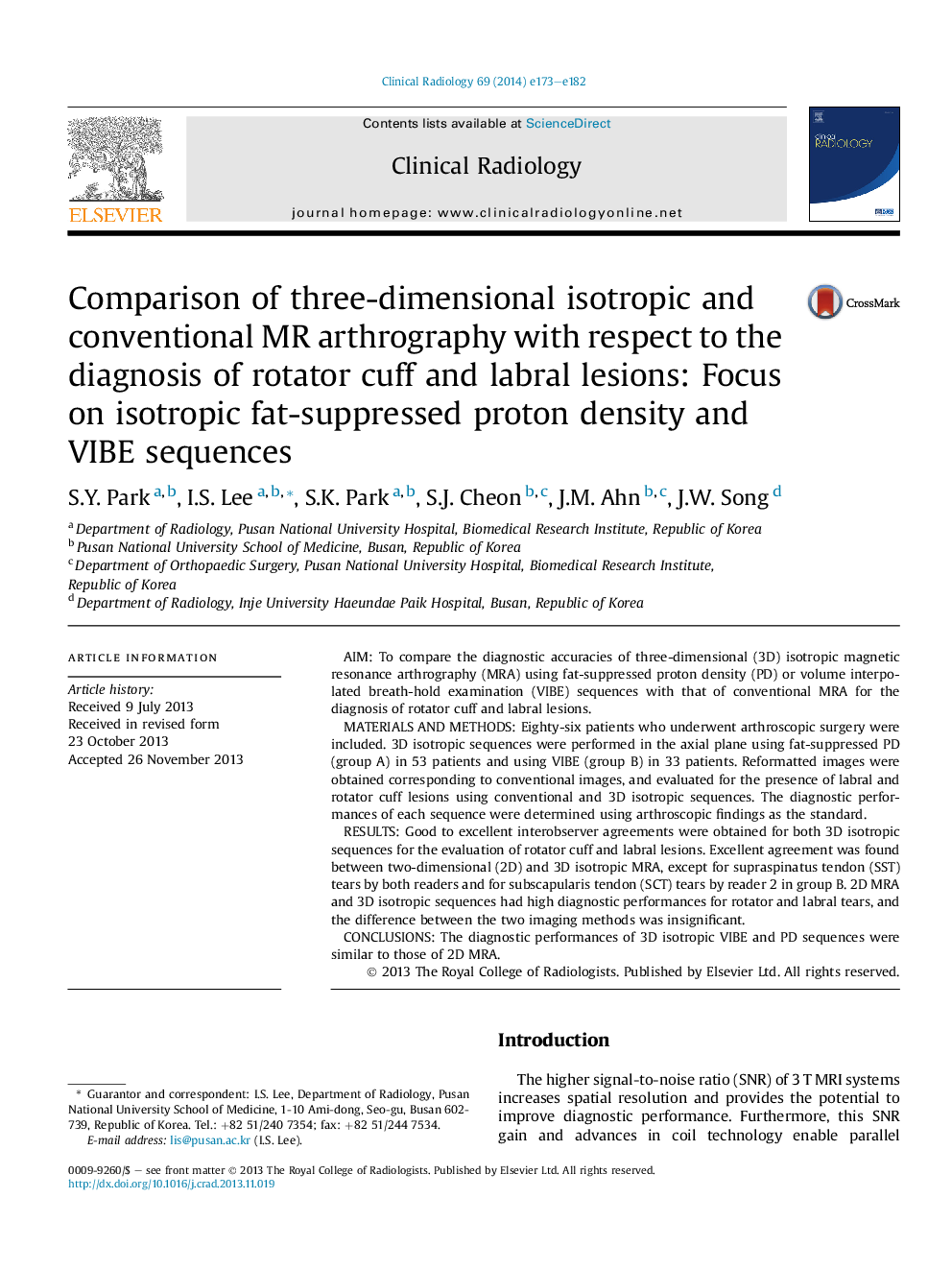| Article ID | Journal | Published Year | Pages | File Type |
|---|---|---|---|---|
| 3981635 | Clinical Radiology | 2014 | 10 Pages |
AimTo compare the diagnostic accuracies of three-dimensional (3D) isotropic magnetic resonance arthrography (MRA) using fat-suppressed proton density (PD) or volume interpolated breath-hold examination (VIBE) sequences with that of conventional MRA for the diagnosis of rotator cuff and labral lesions.Materials and methodsEighty-six patients who underwent arthroscopic surgery were included. 3D isotropic sequences were performed in the axial plane using fat-suppressed PD (group A) in 53 patients and using VIBE (group B) in 33 patients. Reformatted images were obtained corresponding to conventional images, and evaluated for the presence of labral and rotator cuff lesions using conventional and 3D isotropic sequences. The diagnostic performances of each sequence were determined using arthroscopic findings as the standard.ResultsGood to excellent interobserver agreements were obtained for both 3D isotropic sequences for the evaluation of rotator cuff and labral lesions. Excellent agreement was found between two-dimensional (2D) and 3D isotropic MRA, except for supraspinatus tendon (SST) tears by both readers and for subscapularis tendon (SCT) tears by reader 2 in group B. 2D MRA and 3D isotropic sequences had high diagnostic performances for rotator and labral tears, and the difference between the two imaging methods was insignificant.ConclusionsThe diagnostic performances of 3D isotropic VIBE and PD sequences were similar to those of 2D MRA.
